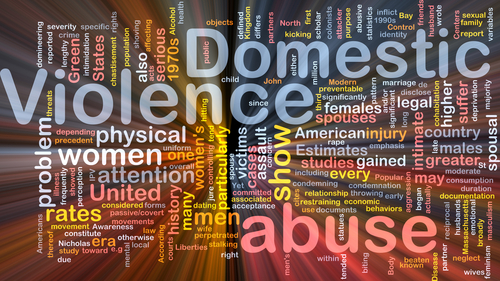
The House has renewed the Violence Against Women Act, and that marks a step in the right direction for victims of sexual and domestic violence. This new legislation is stronger than the older version, which was enacted in 1994, in that it expands and creates federal programs that help victims of sexual and domestic violence. In addition to re-establishing provisions of the older law pertaining to domestic violence, it provides new provisions for Native American women and LGBT victims of sexual and domestic violence.
(More on News at LAWS.com, contact Adam for interviews “adama@laws.com”)
Since its inception in 1994, VAWA has provided a comprehensive approach to tackling the issues of sexual and domestic violence. One of the ways it did this was by improving how the criminal justice system responded to sexual and domestic violence. It required, for instance, that regardless of a victim’s level of income, victims are not required to pay for their own rape exam or for service of a protection order.
VAWA required that a victim’s protection order be recognized by all states and territories in the country, and helped to increase conviction and prosecution rates by helping communities to develop dedicated law enforcement units that dealt specifically with victims of sexual and domestic violence.
In 2011, more than 24,000 incidence of domestic violence were reported to law enforcement in Kansas. That same year, nearly 4,000 victims of domestic violence in the state sought emergency shelter, and nearly 17,700 women and children received non-residential assistance in relation to domestic violence.
The Kansas Coalition Against Sexual and Domestic Violence (KCSDV) aims to eliminate and prevent both sexual and domestic violence. The KCSDV hopes to achieve this goal through effective coalition building among service providers to ensure quality service for victims of domestic violence, statewide educational efforts, advocacy and enhancement of victim services. In 2011 alone, the 29 member programs of the KCSDV provided nearly 97,000 shelter nights to victims of sexual and domestic violence, provided 53,230 supportive counseling hours and served 21,705 victims face-to-face.
The following is an interview with Joyce Grover, executive director of the KCSDV, on her thoughts and feelings about the recent reauthorization of VAWA, and the work of her organization in the realm of domestic violence.
In your opinion, what does the recent passage of the Violence Against Women Act (VAWA) signify for the women's rights movement?
Both the recent passage of the Violence Against Women Act (VAWA), and its original passage in 1994, acknowledge the historical nature of violence against women. For millennia, women and children have been subject to violence in the home, in effect, owned by the husband/father. As we began to move away from this cultural, social and religious definition of family, the impact of violence became more apparent. So, instead of “regulating” what violence against women was allowed, this violence has been outlawed. Each reauthorization of VAWA is another step along the continuum of equal and fair treatment of women and girls. One day, all of us hope to live in safe homes and to be safe on our streets and in communities.
Do you believe the new version of VAWA goes far enough to protect women against domestic violence?
Each version of VAWA has provided increased protections for women. Because sexual and domestic violence have long been a part of our history, both in this country and globally, the changes increasing protection for victims of sexual and domestic violence will likely be incremental. For example, early versions of VAWA addressed domestic violence without addressing sexual violence; those protections are critical. Earlier versions of VAWA did not include full protection for immigrant victims; we now know how critical those protections are for immigrant victims. VAWA has never been fully funded; that is critical. Does the new version go far enough to protect women against domestic violence? Probably not; as we increase protection for victims of domestic violence and sexual violence, we will find the gaps and we will seek to improve VAWA in the next re-authorization.
The new version of VAWA includes historic provisions for Native American Women and members of the LGBT community. Do you think the law as passed represents a step in the right direction for American Indian women and LGBT people in the United States?
Yes, absolutely. This is an example of how the work of ending violence against women changes over time. Our work has to include all victims of domestic violence and sexual assault. When we have a gap in protection for victims, rapists and abusers will take advantage of that gap. That is what was happening for Native American women specifically. Our work to end this historically and culturally acceptable violence has to include all victims.
What has your organization been able to achieve in terms of advancing the cause of domestic violence victims?
The recognition of domestic violence as an important issue identified by Congress has alone advanced protections for domestic violence victims. In the mid to late 1980’s before VAWA existed, only law suits brought attention to the issue. Today, VAWA has allowed us to create consistent training curricula across the criminal justice professions; increased the availability of resources, model response policies, and community collaboration; increased advocacy services; and changed laws that created barriers to safety. And, not only has this organization advanced the cause of domestic violence victims, with VAWA, we have also been able to identify sexual violence as a similarly critical issue. The response to sexual violence is advancing with similar initiatives and collaborations.
As a society, do you believe we have come a long way since the initial passage of VAWA in 1994?
Yes, I do believe we have come a long way since the initial passage of VAWA in 1994. Historically, victims have been blamed for the abuse they have experienced. Question such as: “Why doesn’t she just leave?” and “Why was she at that party drinking?” are questions that support a culture of violence against women. While those questions are still being asked, I believe many people are more likely to identify them as part of the rape culture or the culture of victim blaming. When the President and Vice-President and Congressional leaders say violence against women is wrong and must end, we have come a long way!
Public policy changes made as the result of VAWA are increasing safety, accountability and justice for victims of sexual violence, domestic violence and stalking. For example, we now have domestic violence units in some of the larger prosecutors’ offices and law enforcement agencies. Victims can access advocacy services, allowing them to navigate these often intimidating and confusing systems. Confidentiality for victims is now a critical safety consideration under VAWA. Immigrant victims can access remedies only available because of VAWA. With VAWA, we are now able to provide training on sexual assault, domestic violence, and stalking to criminal justice professionals, judges, attorneys, direct service programs, teachers, social workers, and many, many more professionals. We have the ability to work collaboratively with each of these professionals. And, each of these professionals impacts the lives of victims as they try to address the violence.
There is much, much more to do. VAWA has never been fully resourced by Congress. For every law enforcement officer, attorney, or social worker who now understands the dynamics of sexual and domestic violence, there are hundreds or thousands of others who do not and who need to be reached with information and resources. Until all victims receive appropriate support and responses from all systems, our work is not done. Until perpetrators of sexual and domestic violence are held accountable for the violence and victims are not the first to be blamed, our work is not done.
If you need help, contact the Kansas Domestic Violence HOTLINE for immediate assistance. You can learn more about the issue by visiting the Domestic Violence page.






























